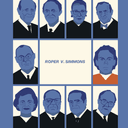

A new study shows that the Mississippi District Attorney’s office that has prosecuted Curtis Flowers for capital murder six times — striking almost all black jurors in each trial — has disproportionately excluded African Americans from jury service for more than a quarter century. Reviewing the exercise of discretionary jury strikes in 225 trials between 1992 and 2017, American Public Media Reports discovered that during the tenure of Mississippi’s Fifth Circuit Court District Attorney Doug Evans (pictured) prosecutors have exercised peremptory strikes to exclude African Americans from jury service at nearly 4½ times the rate at which they struck white jurors.
APM Reports collected and analyzed data on more than 6,700 jurors called for jury service in the the Fifth District. Its study — which was reviewed before its release by a statistics expert and two law professors who had conducted prior jury-strike studies — found that Fifth District prosecutors struck 50 percent of all eligible black jurors compared to only 11 percent of eligible whites. Looking at potentially race-neutral factors raised during juror questioning, APM Reports found that prosecutors were still far more likley to strike black jurors than similarly situated white jurors (click here to enlarge graph). Controlling for these factors, the study found that the odds prosecutors would strike a black juror were six times greater than the odds that they would strike a white juror.
APM Reports prepared the study in connection with its acclaimed podcast series In the Dark, which this season focuses on the Flowers case. Evans’ office has been scrutinized for alleged race-related abuses of powers during the course of Flowers’ six trials for the murder of four furniture store employees. Flowers has consistently professed his innocence. In his first three trials, Flowers was convicted and sentenced to death by all-white or nearly all-white juries. In each of these cases, the state Supreme Court overturned the convictions and ordered new trials. Just before the second trial, Flowers’ parents’ house burned down. Shortly afterwards, his mother was told of a threat made by a white resident that, “If they let that n — – go, another house is going to burn.”
Jurors deadlocked in Flowers’ fourth and fifth trials, split along racial lines. All the white jurors voted for death in both of those trials. Only one black juror served on the sixth jury, and Flowers was sentenced to death in that trial.
Although it is unconstitutional to exclude jurors from service based on race, the practice is ubiquitous in many jurisdictions that heavily use the death penalty. Over the course of 332 criminal trials in CaddoParish, Louisiana in the decade from 2003 – 2012, prosecutors struck black jurors at more than triple the rate of other jurors, approximately the same disproportionate rate at which black jurors were struck in 35 cases resulting in death sentences in South Carolina in the fifteen years between 1997 – 2012. In 173 capital cases tried over a twenty-year period in North Carolina, and in more than 300 capital trials over more than two decades in Philadelphia, Pennsylvania, prosecutors struck black jurors twice as frequently as other jurors. Most recently, in Georgia, Johnny Gates, who was sentenced to death in Columbus, Georgia in 1977, has challenged his conviction with evidence that his prosecutors struck every black juror they could in the seven capital trials they prosecuted between 1976 and 1979, empaneling all-white juries in six of those cases.
Will Craft, Mississippi D.A. has long history of striking many blacks from juries, American Media Reports, June 12, 2018; Jerry Mitchell, Report: Mississippi DA struck black jurors at 4½ times greater rate, June 12, 2018; Sarah Larson, Why “In the Dark” May Be the Best Podcast of the Year, The New Yorker, June 1, 2018; In the Dark, Series 2, Episode 8: The D.A.



